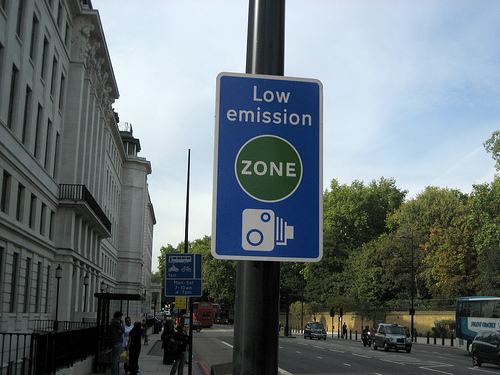The “new normal” in urban transportation: lower emissions, fewer cars
Since the mass production of automobiles almost a century ago, privately owned cars have dominated the urban transportation landscape. They allowed drivers to travel unprecedented distances — lending force as never before to the romantic idea of “the road trip,” and signalling an era of economic prosperity for many.
As the years passed, however, our reliance on the private automobile resulted in disturbing developments: chronic road congestion, social isolation, traffic accidents, and environmental ills like air pollution and a rise in greenhouse gas emissions.
“On The Move,” a blog series produced by online resource TheCityFix and partially funded by Shell, examines current efforts and trends, as well as possible solutions, transforming urban mobility. Below are highlights from the series.
The young turn away from cars
Between 2001 and 2009, 16 to 34 year olds in the United States traveled 23 percent fewer annual vehicle miles on average—from 10,300 to 7,900 miles, according to household travel data. And the drop can’t be attributed to the global fiscal collapse alone: Among employed and financially stable young people, driving rates are also on the decline, according to the same data.
The trend isn’t limited to the United States. In a study of changes among motorists in fifteen countries, including Germany, Japan, Canada, and Sweden, driving-license rates among younger generations dropped significantly between the 1980s and late 2000s.
Conversely, another European study found that a decrease in car travel by young adults was accompanied by a rise in alternative modes of travel in the United Kingdom and Germany.
Low emission zones proliferate in Europe
Vehicle demand management, a blanket term for policies and strategies that aim to curtail vehicle ownership and usage as a mode of urban transportation, continues to grow in influence among urban and transportation planners, with low emission zones (LEZs) gaining in popularity as a tool.
Areas where specific polluting vehicles, such as diesel-powered commercial automobiles, or only low-emitting vehicles, such as plug-in hybrids, are restricted, LEZs have shown remarkable penetration in Europe. Based partly on the European Union’s health-based air-quality standard, LEZs can now be found in 226 cities in Europe, up from thirteen in 2006.

Low emissions zones are proliferating in Europe. From Eurist e.V.
Chinese cities adopt vehicle quota systems
The growth of China’s cities is keeping apace of the country’s improving economy and, with it, rates of vehicle ownership. The country is attempting to control that rate sustainably by instituting vehicle quota systems (VQSs), which limit the number of new vehicle registrations via auction or lottery. The regulatory tool was first introduced in 1994 in Shanghai, where the monthly auction has reduced car ownership to half the level of Beijing, which did not implement a VQS until 2011. There the VQS, which takes the form of a yearly quota license lottery, is set at 240,000.
Guiyang and Guangzhou have since implemented similar regulations, but VQSs are only found in Asia in China and Singapore, the earliest to have introduced the system in 1990.
Related Posts
Category: Miscellaneous, News


















